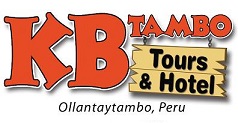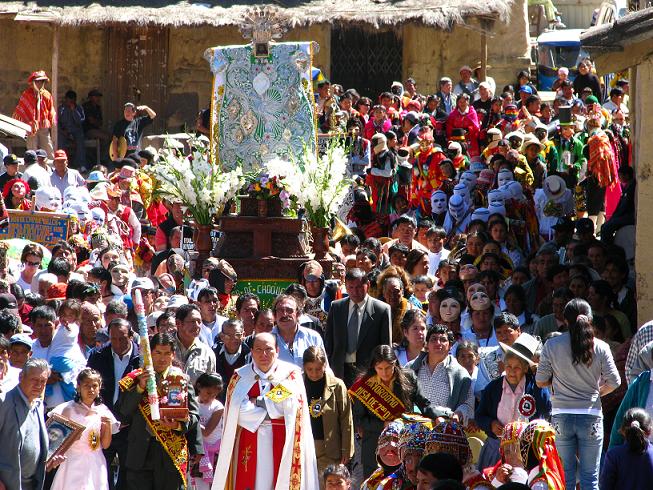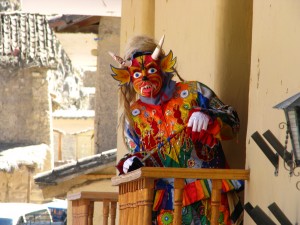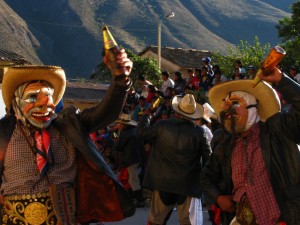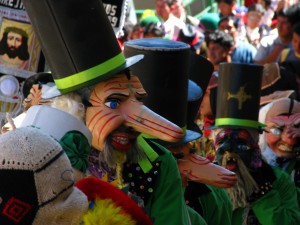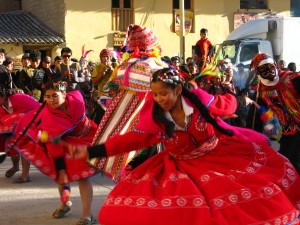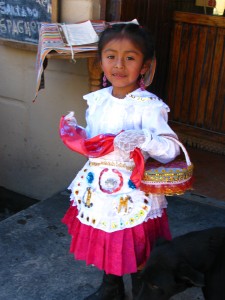Festivals
Festivals in Peru
Peruvians know how to live life. We like to joke that there are 366 festivals a year in Peru – one for every day plus a spare! The truth is that joyous and colorful celebrations are one of the most fascinating and enduring parts of Peruvian culture. There are so many festivals in the Sacred Valley – Inti Raymi, Ollanta Raymi, Bajada de Reyes, Dia de los Compadres, etc., that it is difficult to know where even to begin.
See KB dancing as a Majeno HERE
But not that difficult, and we know exactly where to start – Choquekilka. Words can hardly describe this amazing spectacle, so we will primarily use photos instead. Based loosely on Pentecostal traditions and infused with a heavy dose of Incan beliefs, this four day party in Ollantaytambo simply has to be seen and experienced in order to be believed.
See a couple of local kids dancing HERE
And a great new video HERE
The story, dress and culture of each dance is unique and tells a piece of Peru’s history, from the Chilean invaders to the African slaves to the traditional indigenous Quechua themes. Today, the fiesta brings the people of the town together to celebrate their common heritage and cement social ties – much as it has for many centuries
Most of the dances’ stories center around Spanish oppression after the Conquest of the Incas in the mid 1500’s. Forced to capitulate, at least on the surface, to the Christian beliefs and rituals of their conquerors, the Incas found ways to continue to express their own traditions. In the dance known as the Majenos, for example, the dancers represent Spanish hacienda owners of the 16th and 17th century who had nothing better to do all day than drink and sit around – thus the bulbous noses, large bellies, and bottles of beer.
It is hard to describe the atmosphere of this festival, but few travel experiences can match the feeling of sitting in the central Plaza de Armas in Ollantaytambo when suddenly the strains of blaring trumpets and upbeat marching music come filtering into the square, followed by a band of leather jacketed majenos gaily marching past – priceless!
Once the Spanish caught on to this, public gathering and dances were banned and the Inca culture and religion was forced underground – hence the masks, which allowed for anonymous participation and celebration. Other dances include Ccapac Negro, Ccapac Coya, las Panaderas, and many others. Nearly the whole town participates in this festival, so much so that one should know that although most businesses in town are still open during the festival, many are not and those that are tend to run on a pretty small staff or temporary workers, so be sure to have some patience with your chosen hotel and restuauants.
See a longer (41 minute) clip of the festival HERE
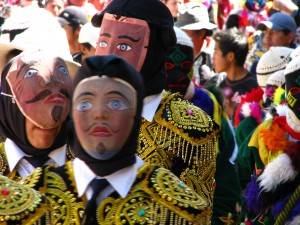
This festival takes place in late May or early June each year, this year the party starts May 27th, 2012. Given that May is by far the best month to visit Peru – lower crowds, perfect sunny weather, and still-green scenery – we can’t think of a better reason to get off the fence and book your once-in-a-lifetime trip to Ollantaytambo, Machu Picchu, and Peru!
And if you can’t make it this year be sure to check back to this site after July 2012, when you will be able to download a preview of the professional documentary we are making of this festival. The cultural integrity of Peru and the Sacred Valley of the Incas remains surprisingly pure considering the grown of tourism here, and the festival of Choquekilka is one of the best examples of that.
The festival continues virtually unaffected and unchanged by outside influences, making it one of the very best reasons to travel to another country and culture. We aim to capture this amazing celebration while still in its purest form, and while coming here in person is by far the best way to experience it, the hope is that the film will allow others who cannot come to still be able to enjoy and appreciate it.
